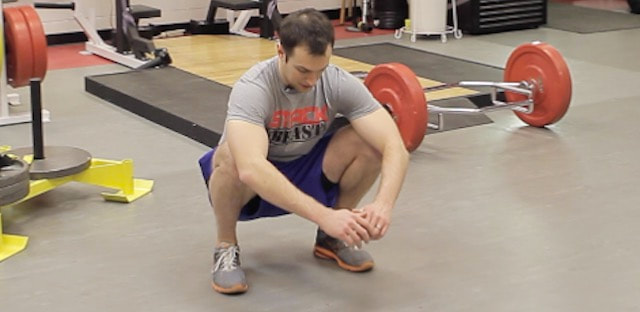|
SEARCH My Blog (Opens in new tab)
Strengthen Hip Flexors, Spring To Your Feet, Balance Better With This One At-Home Exercise14/2/2020 Some find it relaxing as well
As you age, stretching becomes more important, even if you're less active. Unfortunately, I see fewer older people stretching - even those that go to the gym. This one exercise will help regain your flexibility and strength.
Flexibility declines as the years go by because our muscles get stiffer. And if you don't stretch them, the muscles will shorten. Inflexibility puts a crimp in daily acts, making it harder to walk, raise your arms overhead, or turn your head while backing up the car. It undermines your balance, too, which can cause life-altering falls.
Based on how few people stretch after exercising, we have to assume that they hate doing it. Mostly, it is not because they don't have time. They simply make a choice not to spend their time stretching.
Just last Monday night at the gym two older guys - about ten years younger than me - sat on the machines discussing their disdain for stretching. They didn't like doing it, they didn't have time for it, and they didn't think that it was needed. I know, because I was on a mat right in front of them doing my usual ten minutes of warming-down and stretching. Ironically, both of these guys have poor balance - mainly because using the machines has killed it. I've noticed their (very) occasional attempts to do plank on a swiss ball. They can barely hold a few seconds before rolling off. I respect them for exercising consistently. However, for my money, I like to get a much better Return On Exercise (ROE) than merely looking good in a t-shirt. This one straightforward exercise will give you a fabulous Return On Exercise. It will help you strengthen your hip flexors, which will aid you in springing to your feet from the lounge when the ads start. It will help you maintain your balance when you spring to your feet, or reach into the high cupboard for those snacks, and, over time, it will help reduce discomfort in your lower back. There's even more; it will eventually help you fully extend your hips - reducing the adverse effects of sitting for too long. And, will reduce the risk of muscle damage, strains and joint pain arising from inflexibility. Stiffness increases your risk of falling
I want to emphasis that shortened, and inflexible muscles also increase your risk for falling and make it harder to do activities that require flexibility, such as climbing stairs or reaching for a cup in a kitchen cabinet.
If you are over 65, and fall and damage your hip — statistically — your life expectancy is reduced by 5 years (this is a consistent statistic from both US and Australia health records). Typical warning signs for muscle weakness and inflexibility include:
The more often you stretch your muscles, the longer and more flexible they'll become. As a result, you'll be able to:
This exercise will stretch and strengthen the muscles down through your posterior chain - from your mid-back right down through your ankles to your toes! This movement is known as the "triple extension" - a concept almost universally overlooked when it comes to exercise for over 50s. Triple extension refers to the simultaneous extension of the hips, knees and ankles, which is crucial for nearly every athletic movement from jumping to sprinting to cutting. And for living, longer better! Deep Bodyweight Squat The exercise I'm recommending is the Deep Bodyweight Squat (DBS). The benefits of squats are
Additionally, the DBS stimulates additional strength, flexibility and balance benefits for your ankles, your lower legs, your knees, hips and lower back via the hip flexor. If you are doing squats now, think about where you feel the soreness. For most people, it is mainly in their quads. That indicates a lack of posterior chain flexibility and muscular endurance. After doing deep bodyweight squats for a while, you will experience less back pain and also notice that any soreness is distributed across your glutes and hamstrings, as well as your quads. Ankles, knees and hips, flexing and extending those joints at the same time is the basis for every type of athletic and lifestyle movement. Master that first before loading up with weights. Most people at the gym train only half their range of motion. That leads to problems in activities outside of the gym when they attempt movements demanding an extended range of motion. That is when strains, sprains and spasms occur, and falls. How to Deep Bodyweight Squat safely
The DBS looks simple.
In practice, it takes a little getting used, especially to remain comfortable and steady at the bottom. Here's the flow:
The key for the DBS is that you go well past parallel—and hold it. The exercise sequence is simply this:
Don't be put off if you find it challenging
Most people will find it challenging to do this in a controlled balance movement, right to the bottom.
If you need to balance or hold on to a table or shelf - both hands out in front - then do that until you build up strength. Here is the catch-22 - the reason you find it difficult speaks to the benefits it can ultimately offer you. So keep trying. You might also find yourself falling over backwards when first settling into the deep position. Most people do. Find something to grip lightly, just enough to hold your balance, but not enough to depend upon. Over time your nervous system and muscles will tune in to keeping you upright. Hint: don't let yourself become dependant on holding something - keep practising consistently. As you become more comfortable in the DBS, your flexibility and mobility will slowly improve. HINT: If you find yourself falling backwards then try this exercise to build your structural balance. Fold your arms and hold them directly out in front of you - parallel to the floor. Move as close as you can to a wall, your elbows just touching it. Rotate your hips back as you simultaneously run your elbows down the wall, not leaning on it, just barely touching it. Move slowly to the half squat position, thighs parallel with the floor. Keep practicing this until you can do it without losing your balance. As a final test, drop your arms to the side, move your toes to within 2cm from the wall, and again do the half squat without falling backwards. If your knees come forward and push you off the wall then you need to keep practicing with your elbows in front. Finally, do the full deep squat in these two positions — elbow distance and up close to a wall.
You will find it beneficial to do this exercise every day. You need daily motion for better circulation and metabolic preservation.
It's also best if you can find a short time to warm up before you stretch your posterior chain. Warming-up means getting blood and oxygen to the tissue to make it more pliable and amenable to change, especially at that deep squat position. If you don't warm up, the deep hold can damage your joints and tendons. The warm-up isn't stretching; it is movement - moving your joints through their available range of motion, without holding a position. These movements include rolling your shoulders, lifting your knees, and sweeping your arms out to the sides and up to the ceiling repeatedly. Do this type of thing for a minute before your DBS routine. For example, you could do these five movements as a warm-up:
You are then ready for your DBS exercise. Do these for a few weeks and let me know how you feel. I do them daily, and before running, and after running, and I know that they help my body connect with itself and feel more in balance, and stronger. At the gym, I do the DBS on a vibration plate (low frequency, 30 seconds) as part of my regular warm-up. PS Don’t be concerned about exactly how you look at the deep squat position. Your deep position is not going to look like everyone else's deep position - each person is just built differently. Good luck.
Follow me on Quora for more health and fitness tips.
If you enjoyed this article >> Follow me Leave a comment >> Share it >> Stay healthy If you have any questions email me and I will get back to you.
Subscription includes free 7 Secrets
For Fitness After 50 Book  RSS Feed RSS Feed
Latest: get your free customised fitness plan designed uniquely for you.
|
ChoicesSince I was diagnosed at 50 with Type 2 diabetes I've been learning how to do bone-building fitness training which lowers my age. You can too. It's your choice. Walter Categories
All
Archives
May 2023
|





